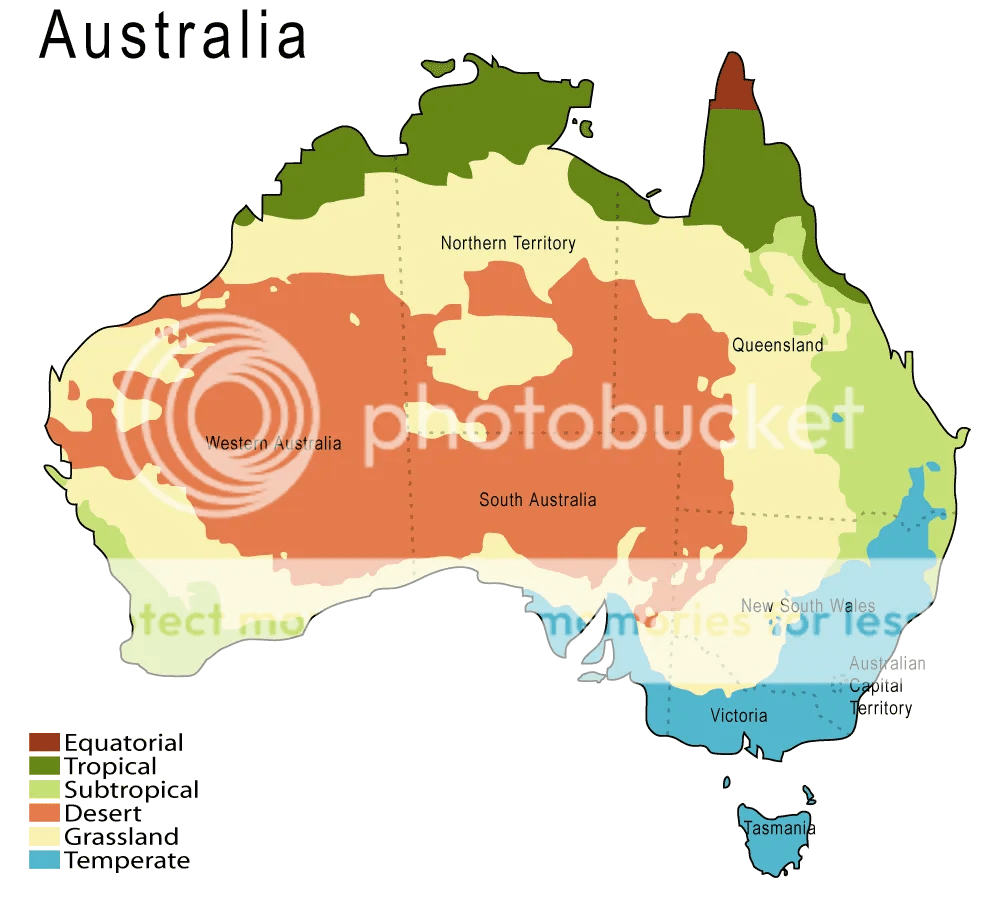As projected by climate-models, extreme weather events continue to intensify all around the world. Particularly hard hit this week is Australia. Drought and fires continue in Southeastern Australia where record temperatures are being set, while in the North in Queensland, torrential flooding has left communities cut off from the outside world.
Fires are burning on the outskirts of the nation’s two largest cities, Sydney and Melbourne. These, coastal(!) cities, in addition to suffering through ongoing droughts, are now recording record temperatures of 116 degrees Fahrenheit. The small town of Avalon 50 km to the SE of Melbourne had a record temperature of 118 degrees today. [personnel communication to author–JR]

Political Map of Australia
Bush fires are what everyone fears. Tens of thousand of firefighters from Australia are on standby to combat the large number of potentially deadly bush fires that could break out. As the European Space Agency explains:
The country’s predominantly flat, dry and warm landscape makes it prone to fires year round, but the risks increase during its hottest months – November through March. In addition, Australia’s native vegetation burns quickly and easily. Eucalyptus trees, for example, contain oil that makes them especially dangerous in a bushfire.
Scientific American’s report also highlighed the gravity of the situation.
“It’s just going to be probably … the worst day ever in the history of the state in terms of temperatures and winds,” Victoria state premier John Brumby told reporters on Friday.
“The state is just tinder dry, so people need to exercise real commonsense tomorrow, if you don’t need to go out don’t go out, it’s a seriously bad day,” he said.
Authorities fear the heatwave, which last week caused major blackouts and left thousands of residents without air conditioning, could again be fatal to the elderly.
There were 22 “sudden deaths” in Adelaide last Friday at the height of the heatwave and several in Melbourne.
“This is about protecting our nation’s frail and aged,” said Minister for Aging Justine Elliot, in warning nursing homes to prepare for the heatwave. Nursing homes in southeast Australia care for some 170,000 residents.
South Australia’s main morgue was now almost full with 71 bodies, a temporary morgue has been hired, and elective surgery delayed as hospitals try to cope with more than 600 heat-related cases, said local media.
Rail authorities in Sydney have ordered a slowdown of the network to try and avoid accidents if rail lines buckle, as they did in last week’s heatwave in Melbourne and Adelaide.

Climate Map of Australia
While the southeast burns, Queensland to the north is suffering torrential rains leading to widespread flooding as rivers overflow their banks. <a href=”“>Australian Broadcasting Network news has declared:
Emergency crews in Queensland are monitoring flooding in rivers across the state’s north, as heavy rain is forecast to continue overnight between Innisfail and Bowen.
The Bruce Highway is cut between Ayr and Townsville and the towns of Tully and Ingham are isolated.
Police have asked people to limit non-essential travel if possible in the region, saying road conditions and closures will change as creeks and water courses rise and fall quickly.
Weather bureau forecaster Brian Rolstone says hundreds of millimetres of rain could fall tonight.
Things are so bad that even climatologists are starting to do the unthinkable, mention “extreme weather” and “climate change” in the same sentence in public. We know that scientifically speaking (one gets sick of repeating this) that it is not possible to establish a link between any particular weather event and Climaticide, but anyone with half a brain knows that there is a statistical relationship between the intensity of extreme weather events and global warming. So, my view is that we ought to mention this statistical relationship as often as we can along with the fact, as Dr. Stone points out, that what is happening in Australia (and in China, and in the United States, etc.) fits perfectly with what the climate models predict.
Dr Roger Stone, from the University of Southern Queensland, says some models suggest the monsoonal rain could be heading south.
“Some of the models that look more closely at week-to-week patterns, especially from the United States are suggesting that some of this rain could drift further south, as far south as southern Queensland – not all of it of course – but some of the rain could drift further south on occasions,” he said.
He says the extremes being encountered in Australia this week fit climate change models, but it is too early to prove a direct link to changing weather patterns.
Dr Stone says the pattern of contrasts is not unusual for this time of year, but the intensity is. [emphasis–JR]
“It certainly fits the climate change models but I have to add the proviso that it’s very difficult – even with extreme conditions like this – to always attribute it to climate change, but it does fit the climate change models,” [emphasis–JR] he said.
NOTE: Unenergy posted a powerful, informative diary on this topic yesterday at Daily Kos that I would heartily encourage everyone to read:
wooden power poles self-igniting
Crossposted at Daily Kos




[…] machine to spread messages and one-liners making these links. Will they, however, mention that Australia is burning up and drowning at the same time? (Any mention of Australia’s Black Saturday when laughing about Washington’s White […]
By: Fire and Ice … on March 2, 2009
at 7:28 am
[…] or perhaps at some lodge surrounded by forests devastated by pine bark beetles or perhaps in an Australia area still blackened from this past February’s devastating […]
By: Dark, Cold, Wet Copenhagen and Global Warming on November 23, 2009
at 12:17 pm